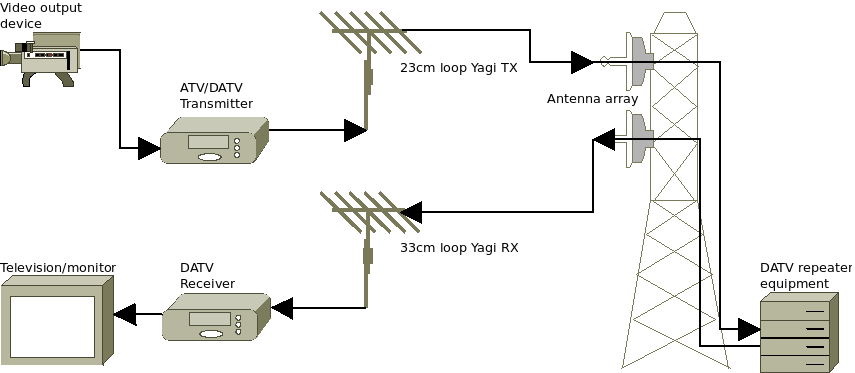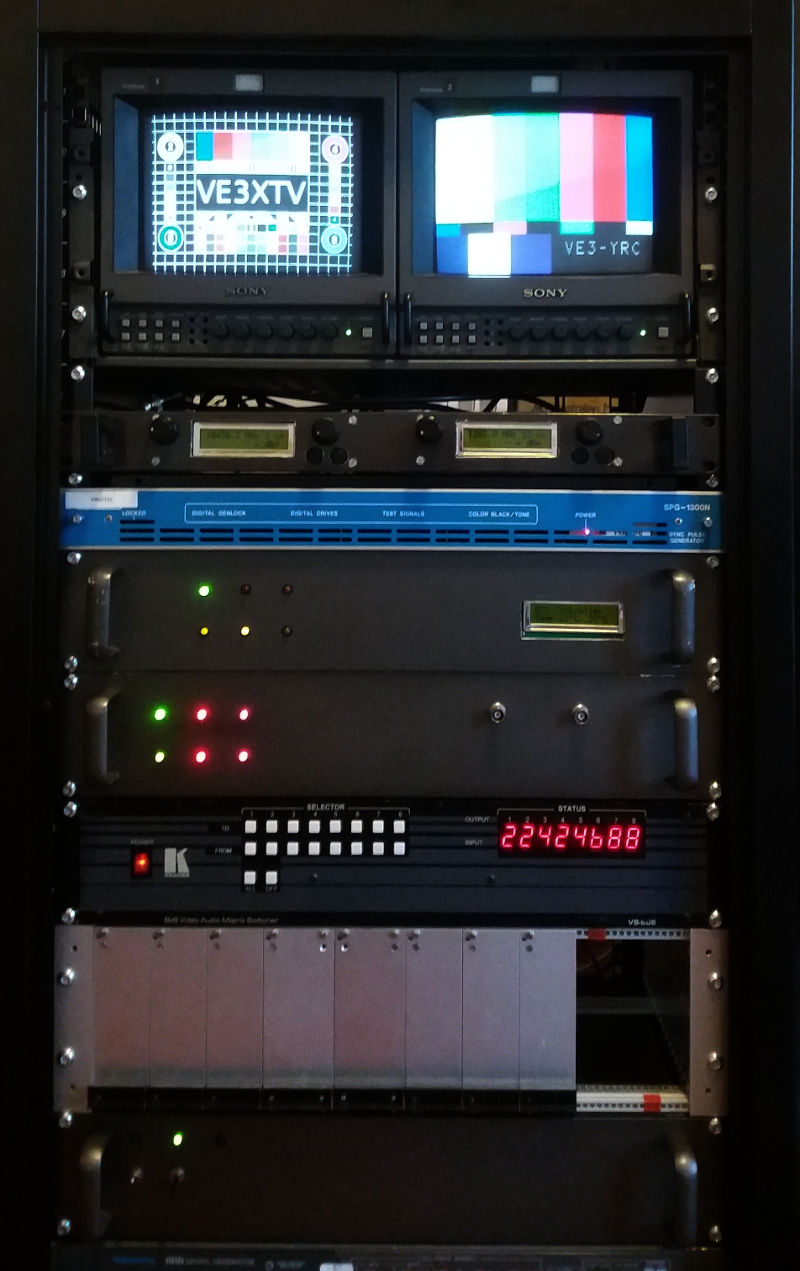



The ATV Repeater
What is an ATV repeater?
An ATV repeater is just like any other radio repeater, to extend radio coverage over a wider area, but in our case it is a Television pictures. There are two types of repeaters analog or digital, this is where ATV and DATV come from (Amateur Television, Digital Amateur Television). Whereby ATV uses analog transmissions such as AM or FM, a DATV repeater is all digital with no analog, more like how a data repeater works.
__________________________________________________________________
How does an ATV repeater work?
Unlike a voice repeater, an ATV repeater transmits all the time more like broadcast transmitter and has two mode of operation. One is beacon mode whereby if there is no received signal it generate it's own video, in the way of a testcard or as in information pages in a slide show format. The other is repeat mode, this is where it will relay incoming signal back out again as in conventional repeater set up.
__________________________________________________________________
Bandwidth
With ATV and now DATV are sending moving images this takes up a large amounts of bandwidth to make this happen, this is why these wide band mode are used on bands from UHF and up. With the RF been modulated over a wide bandwidth every bit of power matters, so high antennas become very useful.
__________________________________________________________________
Overload and interfeance
ATV and DATV are modes that need to be used on clear channel away from other users, been wide band it does not take much to knockout an ATV signal. This is why filters are very important to remove unwanted adjacent services from the wanted signal. Another thing to be careful of is overload from very strong nearby signals, as in the 13 cm band from WiFi above 2.4 GHz, this happens when the front end of the receiver gets to much signal.


ATV repeater equiment


Ontario ATV Infomation page

How to setup your ATV receiver
Working with ATV on the microwave bands above 1 GHz, is not that hard to do. In fact it is easier to do then a narrow band transverter, you only have a modulator to build not a RX/TX mixer and amplifier. Using FM TV this is done with not much more then a VCO, whereby you add baseband video is applied to the voltage control input of the VCO. This is basically all I have done with my 23 cm modulator circuit boards, they have three VCO's two for the stereo sound and one for the RF output. With modern day electronic components, a FM modulator can be made for any band up to 10 GHz (23,13, 9 5 and 3 cm bands) without to much work. I am now using one of my 23 cm modulator boards with a 10 GHz VCO, this is done by replacing the 1300 MHz unit with one at the wanted frequency range.
Take a look at this how to guide for setting up an ATV receiver "How to pdf", if anyone is interested in contracting an ATV modulator I have the information on how to operate on these bands 23, 13 and 3 cm.
The Greater Toronto Area ATV Repeater Project.
Here are the Ham bands that will be used for ATV / DATV project:
33 cm (902 to 928 MHz) digital output.
23 cm (1240 to 1300 MHz) both analog and digital inputs.
13 cm (2300 to 2450 MHz) digital output.
3 cm (10 to 10.5 GHz) for linking.
There are two repeaters that I am working on at the moment, one is for portable applications and other for a fixed repeater site. The portable ATV repeater can be received on a digital Satellite set top box, with a S-band LNB and filter. These are free to air Mpeg2 using the DVB-S system, they are easy to come by at market days or on Ebay. As for the S-band LNB's I have a small number of them here I can sell or lone out. A receive filter is a good idea to keep out the local WiFi from overloading this down converter (the LNB). This filter you are able to buy or you can build one, maybe an ATV working bee doing filters?
The S-Band LNB has LO at 3950MHz with receive range of 2.3 to 2.9GHz, using a N-connector RF in and F-connector IF out + DC in. Loop yargi's are commonly used at this frequency range they can found at directivesystems.com look at 12cm (2350 – 2480 MHz) for 2370 MHz.
For more information and updates will be posted on the Ontario-ATV reflecltor at:
[email protected]
[email protected]
Copyright © 2017 by Grant VE3XTV · All Rights reserved · E-Mail: [email protected]